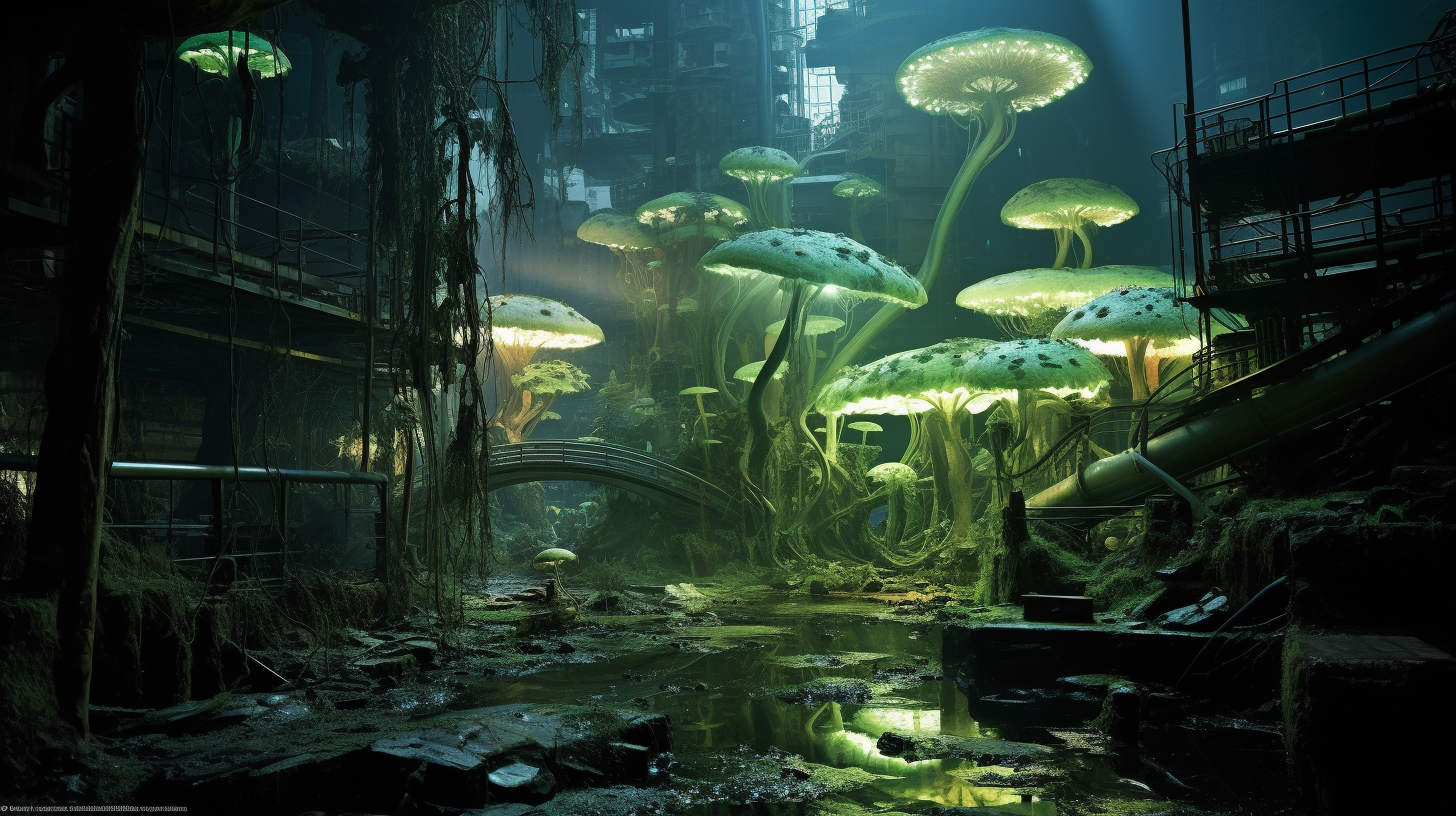In a world where nature’s canvases have been bleached by the harsh chemicals of industrial negligence, humanity’s latest tableau arises — the Neon Jungles. These vivid, artificial ecosystems are the dernier cri of mankind’s attempts to mimic the bygone splendors of Earth’s flora and fauna. But what are these Neon Jungles, and can they ever truly compare to the natural wonders they replace?
In the heart of what once was the Amazon, now stretches a sprawling collection of bioluminescent trees, woven together with a mesh of fiber optic vines. Orchid-like appendages, engineered to glow in the dark, dappling the artificial canopy with surreal hues. This is the Neon Jungle, a high-tech homage to the lush, verdant rainforests that hardly exist beyond the confines of our collective nostalgia.
These synthetic forests are made from a cornucopia of plastics and metals, with nano-engineered leaves that can perform photosynthesis — or at least, a mechanical semblance of it. They’re pieced together in factories and planted in patterns determined by algorithms, designed to optimize the light show for the hordes of tourists that flock to witness this spectacle. A dazzling mockery, one might say, of the organic chaos that once ruled.
“It’s nature, but curated,” says Dr. Eva Lin, chief botanist behind the project. “Here, you’ll find no decay, no death — just perennial beauty. But it’s a beauty without a soul, and the visitors know it. They come here searching for something lost, only to find a gorgeous illusion.”
Indeed, the Neon Jungles are mesmerizing. But within the hypnotic swirl of jade and cobalt light, there lies a disquieting truth: this is a habitat with no natural ecosystem. There are no insects chittering among the foliage, no birdsong, just the soft hum of solar collectors powering the diodes that bring this ersatz jungle to life. A simulacrum of biodiversity that supports nothing but its own existence.
As we traverse pathways flanked by UV-reactive flowers, the ecological sterility is palpable. There is wonder, yes — but it’s a synthetic one, generated by algorithms and maintained by machines. It is the sterile womb that births a new, unnatural world order. The air, albeit clean and scrubbed by the very plants that toy with our senses, lacks the earthy scent of a real forest. It’s the aroma of technology working overtime, a chemical perfume of progress mixed with desolation.
There are those who say that the Neon Jungles are a necessary evil. As the once-verdant Earth has become a wasteland of droughts, wildfires, and unimaginable storms, these artificial biomes offer a glimpse, albeit plasticized, of what we’ve squandered. A glitzy distraction from the grueling work of trying to reverse what seems like the planet’s inevitable decline.
“Our world may be dying,” admits Dr. Lin, a note of remorse etching her voice, “but our desire for the green, growing things lives on. This might not be life, but it’s a testament to our refusal to let go of it entirely.”
The question that looms, foreboding and resonant, is a simple one: Is this all that remains for us? A grave indicator that our yearning for genuine connection with the living Earth can be so easily placated by LEDs and latex? Perhaps most disturbing is the thought that future generations will look upon these exquisitely crafted fakes and see them as normal — relics of a time when humanity tried to hold onto a beauty it couldn’t save, and instead created a falsehood to fill the void.
As night falls, the Neon Jungles pulse with a life of their own, a testament to human ingenuity, but also to our profound loss. The dichotomy is glaring — in seeking to preserve the essence of nature, we’ve turned to a spectacle devoid of its fundamental truth. And so, in the end, the question remains whether the Neon Jungles are a triumph of the human spirit, or a neon-lit epitaph for a world that was.
One thing is certain: as long as these glowing groves stand, people will come seeking connection, solace, perhaps even forgiveness from the specters of the past, under the artificial luminescence of a world that used to be alive.
